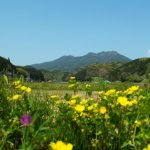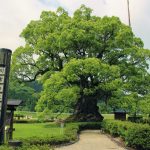Warning: Trying to access array offset on value of type bool in /home/stsep/slowtrip-saga.com/public_html/wp-content/themes/gensen_tcd050/functions/short_code.php on line 36
Once upon a time, there was a place called Wakaki.
In the Edo period, Wakaki was divided into four territories: Okabe Territory Higashi Kawago Village, Okabe Territory Nishi Kawago Village, Hasuike Territory, and Takeo Territory (from “Kawago Shoya Nikki: Shobikae-cho wo yomu,” Masanobu Matsuo).
Wakaki, divided into fifteen areas today, is full of rich history.
My husband and I moved to Wakaki to enjoy the country lifestyle. After moving here, I was told about “kuyaku.” It is something all residents in Wakaki have to do. What is kuyaku?
The daughter of our landlord told us: “One member of each family has to do it. To prevent grass from blocking agricultural ditches, we get together to cut the grass on the roadside. Please prepare a hat, gloves, and a sickle for your husband.”
When we moved to Wakaki, my husband had a bone fracture. So I had to do the kuyaku instead.
I have never cut grass before. It was also the first time for me to buy a sickle, and I was a little nervous.

Soon, the day of kuyaku came. In the morning, men left in lightweight trucks to the place where grass should be cut. They cut grass using electric mowers.
Women cut grass using a sickle. Regardless of age and sex, everyone works hard to cut grass. All women doing kuyaku are energetic “Princesses of Kuyaku.”
I began to cut grass together with four other women. We climbed into the mountains cutting grass. This is the time I noticed.
“Most of Wakaki is covered by mountains!”
“Of course it is,” said the women of Wakaki.
Later I found that we have to do kuyaku three or four times a year, and if you cannot join the kuyaku, you have to pay a penalty. You will be released from the work when you turn 75. Everyone in Wakaki is so energetic.

However, it was a good experience. I could greet, talk and exchange information with people in this community. I believe working together drenched in sweat with people in the community is a good custom of Wakaki.

Author name: Noi
Hometown: Bangkok, Thailand
I live in Wakaki-cho, Takeo City, Saga Prefecture, together with my Japanese husband, raising our child.
In Thailand, I used to do art and publication-related work.
I have a Kyushu Special Zone Guide-interpreter’s license (in Thai).

 TH
TH KR
KR JP
JP

